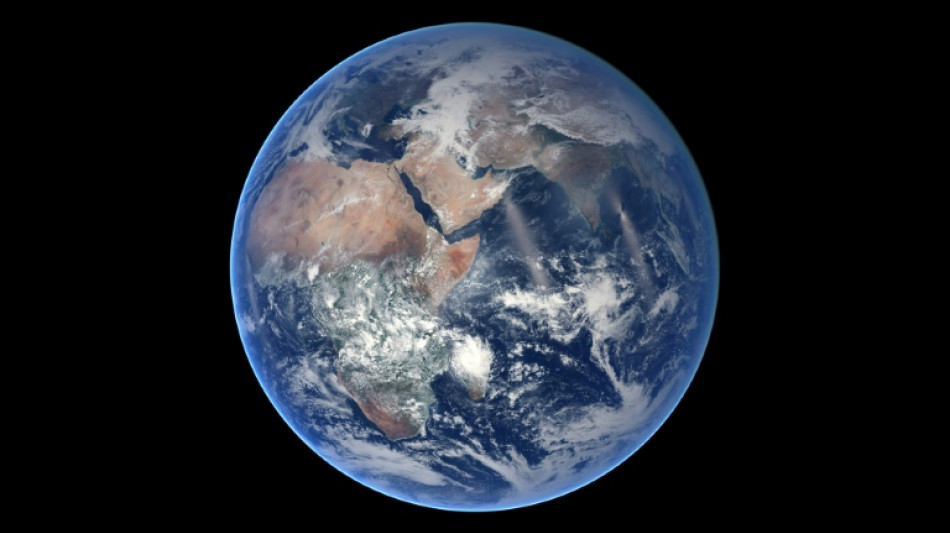
-
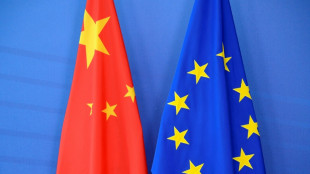 EU slams China dairy duties as 'unjustified'
EU slams China dairy duties as 'unjustified'
-
Italy fines Apple nearly 100 mn euros over app privacy feature
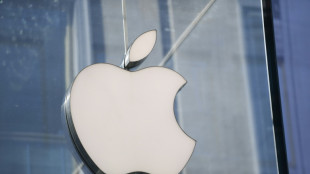
-
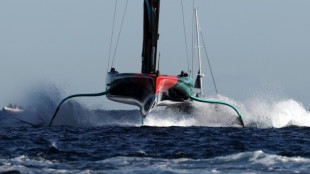 America's Cup switches to two-year cycle
America's Cup switches to two-year cycle
-
Jesus could start for Arsenal in League Cup, says Arteta

-
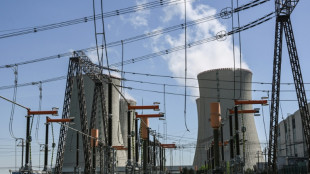 EU to probe Czech aid for two nuclear units
EU to probe Czech aid for two nuclear units
-
Strauss says sacking Stokes and McCullum will not solve England's Ashes woes

-
 Noel takes narrow lead after Alta Badia slalom first run
Noel takes narrow lead after Alta Badia slalom first run
-
Stocks diverge as rate hopes rise, AI fears ease

-
 Man City players face Christmas weigh-in as Guardiola issues 'fatty' warning
Man City players face Christmas weigh-in as Guardiola issues 'fatty' warning
-
German Christmas markets hit by flood of fake news

-
 Liverpool fear Isak has broken leg: reports
Liverpool fear Isak has broken leg: reports
-
West Indies captain says he 'let the team down' in New Zealand Tests
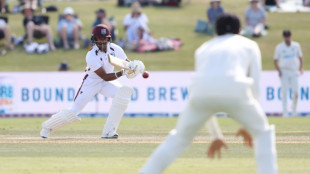
-
 Thailand says Cambodia agrees to border talks after ASEAN meet
Thailand says Cambodia agrees to border talks after ASEAN meet
-
Alleged Bondi shooters conducted 'tactical' training in countryside, Australian police say

-
 Swiss court to hear landmark climate case against cement giant
Swiss court to hear landmark climate case against cement giant
-
Knicks' Brunson scores 47, Bulls edge Hawks epic

-
 Global nuclear arms control under pressure in 2026
Global nuclear arms control under pressure in 2026
-
Asian markets rally with Wall St as rate hopes rise, AI fears ease

-
 Jailed Malaysian ex-PM Najib loses bid for house arrest
Jailed Malaysian ex-PM Najib loses bid for house arrest
-
Banned film exposes Hong Kong's censorship trend, director says

-
 Duffy, Patel force West Indies collapse as NZ close in on Test series win
Duffy, Patel force West Indies collapse as NZ close in on Test series win
-
Australian state pushes tough gun laws, 'terror symbols' ban after shooting

-
 A night out on the town during Nigeria's 'Detty December'
A night out on the town during Nigeria's 'Detty December'
-
US in 'pursuit' of third oil tanker in Caribbean: official

-
 CO2 soon to be buried under North Sea oil platform
CO2 soon to be buried under North Sea oil platform
-
Steelers edge Lions as Bears, 49ers reach playoffs

-
 India's Bollywood counts costs as star fees squeeze profits
India's Bollywood counts costs as star fees squeeze profits
-
McCullum admits errors in Ashes preparations as England look to salvage pride

-
 Pets, pedis and peppermints: When the diva is a donkey
Pets, pedis and peppermints: When the diva is a donkey
-
'A den of bandits': Rwanda closes thousands of evangelical churches
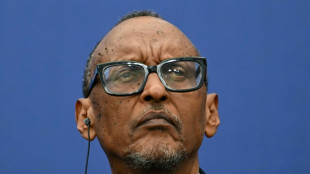
-
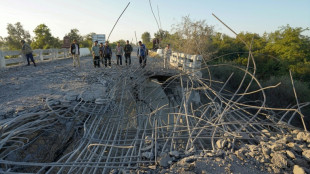 Southeast Asia bloc meets to press Thailand, Cambodia on truce
Southeast Asia bloc meets to press Thailand, Cambodia on truce
-
As US battles China on AI, some companies choose Chinese

-
 AI resurrections of dead celebrities amuse and rankle
AI resurrections of dead celebrities amuse and rankle
-
Tectonic Metals Drills 4.05 G/T AU Over 30.48 Meters, Including 8.84 G/T AU Over 13.72 Metres at Flat Gold Project, Alaska

-
 Switching Payroll Providers Won't Fix Past IRS Errors - Clear Start Tax Warns Business Owners About Lingering Liability
Switching Payroll Providers Won't Fix Past IRS Errors - Clear Start Tax Warns Business Owners About Lingering Liability
-
Ovation Science Sees Expanded Opportunities for Its Topical Products Following U.S. Cannabis Rescheduling

-
 PPX Mining Appoints Ernest Mast as President and CEO and Announces Stock Option Grants
PPX Mining Appoints Ernest Mast as President and CEO and Announces Stock Option Grants
-
Rio Grande Resources Completes 2025 Field Program and Advances Drill Targeting at the Winston Gold-Silver Project

-
 Eco Innovation Group (ECOX) Receives Strong Speculative Buy Rating from Harbinger Research Following Strategic Costa Rica Expansion
Eco Innovation Group (ECOX) Receives Strong Speculative Buy Rating from Harbinger Research Following Strategic Costa Rica Expansion
-
DealFlow Discovery Conference Announces Panel on Microcap Deal Trends and Regulation for 2026, Featuring Richard Anslow of Ellenoff Grossman & Schole

-
 EonX Announces Update To Loan Facility
EonX Announces Update To Loan Facility
-
Silver X Mining Announces Management Update

-
 Medicus Pharma Ltd. Announces Engagement With Reliant AI to Develop Artificial Intelligence (AI) Driven Clinical Data Analytics Platform
Medicus Pharma Ltd. Announces Engagement With Reliant AI to Develop Artificial Intelligence (AI) Driven Clinical Data Analytics Platform
-
Revolve Receives Generation Permit Approval for 130 MW El 24 Wind Project in Mexico

-
 NuRAN Restores Sites in Ghana and Resumes Network Deployment Activities in the Democratic Republic of the Congo
NuRAN Restores Sites in Ghana and Resumes Network Deployment Activities in the Democratic Republic of the Congo
-
1933 Industries Issues Final Reminder to 2024 Debenture Holders: December 22 Is the Deadline to Convert

-
 Arrive AI to Attend CES 2026 to Engage Industry Leaders on the Future of Autonomous Delivery and AI-Driven Logistics
Arrive AI to Attend CES 2026 to Engage Industry Leaders on the Future of Autonomous Delivery and AI-Driven Logistics
-
Guanajuato Silver Receives TSXV Conditional Approval for Bolanitos Acquisition

-
 Brenmiller Energy CEO Avi Brenmiller Issues Year-End Letter to Shareholders
Brenmiller Energy CEO Avi Brenmiller Issues Year-End Letter to Shareholders
-
1933 Industries Achieves Positive Income in Q1 2026, Marking Third Consecutive Profitable Quarter


Earth's inner core may have started spinning other way: study
Far below our feet, a giant may have started moving against us.
Earth's inner core, a hot iron ball the size of Pluto, has stopped spinning in the same direction as the rest of the planet and might even be rotating the other way, research suggested on Monday.
Roughly 5,000 kilometres (3,100 miles) below the surface we live on, this "planet within the planet" can spin independently because it floats in the liquid metal outer core.
Exactly how the inner core rotates has been a matter of debate between scientists -- and the latest research is expected to prove controversial.
What little is known about the inner core comes from measuring the tiny differences in seismic waves -- created by earthquakes or sometimes nuclear explosions -- as they pass through the middle of the Earth.
Seeking to track the inner core's movements, new research published in the journal Nature Geoscience analysed seismic waves from repeating earthquakes over the last six decades.
The study's authors, Xiaodong Song and Yi Yang of China's Peking University, said they found that the inner core's rotation "came to near halt around 2009 and then turned in an opposite direction".
"We believe the inner core rotates, relative to the Earth's surface, back and forth, like a swing," they told AFP.
"One cycle of the swing is about seven decades", meaning it changes direction roughly every 35 years, they added.
They said it previously changed direction in the early 1970s, and predicted the next about-face would be in the mid-2040s.
The researchers said this rotation roughly lines up with changes in what is called the "length of day" -- small variations in the exact time it takes Earth to rotate on its axis.
- Stuck in the middle -
So far there is little to indicate that what the inner core does has much effect on surface dwellers.
But the researchers said they believed there were physical links between all Earth's layers, from the inner core to the surface.
"We hope our study can motivate some researchers to build and test models which treat the whole Earth as an integrated dynamic system," they said.
Experts not involved in the study expressed caution about its findings, pointing to several other theories and warning that many mysteries remain about the centre of the Earth.
"This is a very careful study by excellent scientists putting in a lot of data," said John Vidale, a seismologist at the University of Southern California.
"(But) none of the models explain all the data very well in my opinion," he added.
Vidale published research last year suggesting that the inner core oscillates far more quickly, changing direction every six years or so. His work was based on seismic waves from two nuclear explosions in the late 1960s and early 1970s.
That timeframe is around the point when Monday's research says the inner core last changed direction -- which Vidale called "kind of a coincidence".
- Geophysicists 'divided' -
Another theory -- which Vidale said has some good evidence supporting it -- is that the inner core only moved significantly between 2001 to 2013 and has stayed put since.
Hrvoje Tkalcic, a geophysicist at the Australian National University, has published research suggesting that the inner core's cycle is every 20 to 30 years, rather than the 70 proposed in the latest study.
"These mathematical models are most likely all incorrect because they explain the observed data but are not required by the data," Tkalcic said.
"Therefore, the geophysical community will be divided about this finding and the topic will remain controversial."
He compared seismologists to doctors "who study the internal organs of patients' bodies using imperfect or limited equipment".
Lacking something like a CT scan, "our image of the inner Earth is still blurry", he said, predicting more surprises ahead.
That could include more about a theory that the inner core might have yet another iron ball inside it -- like a Russian doll.
"Something's happening and I think we're gonna figure it out," Vidale said.
"But it may take a decade."
A.Malone--AMWN


